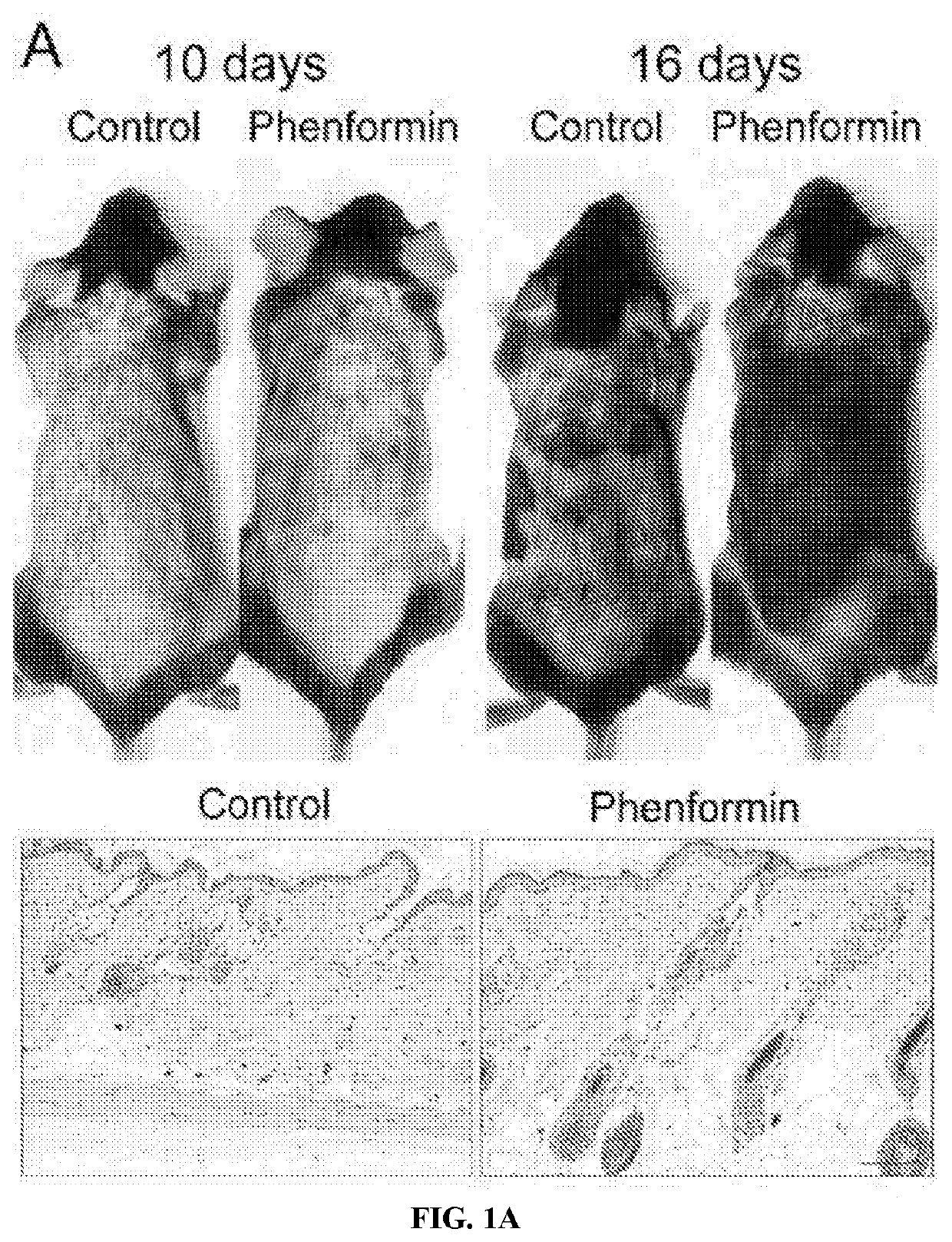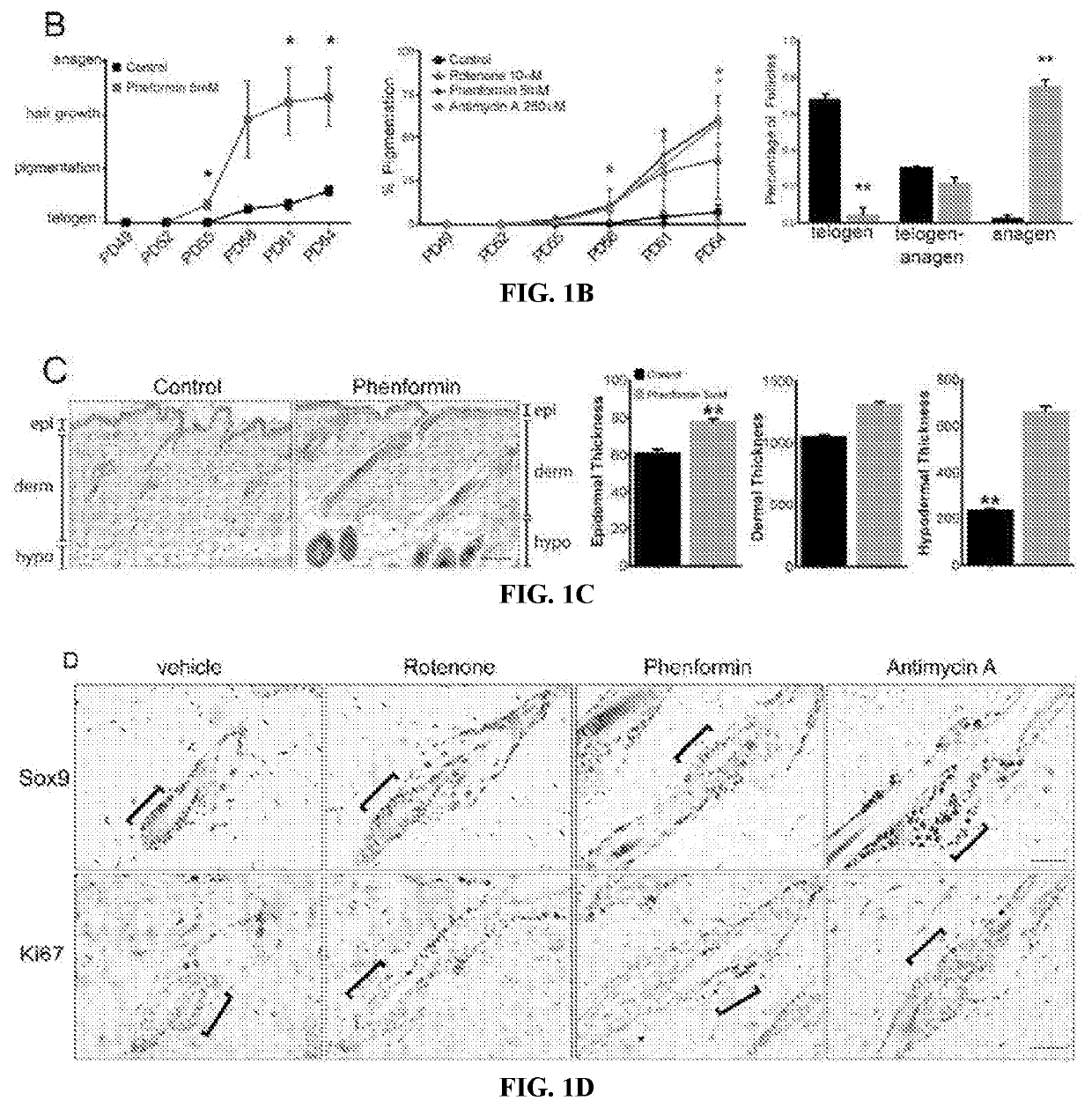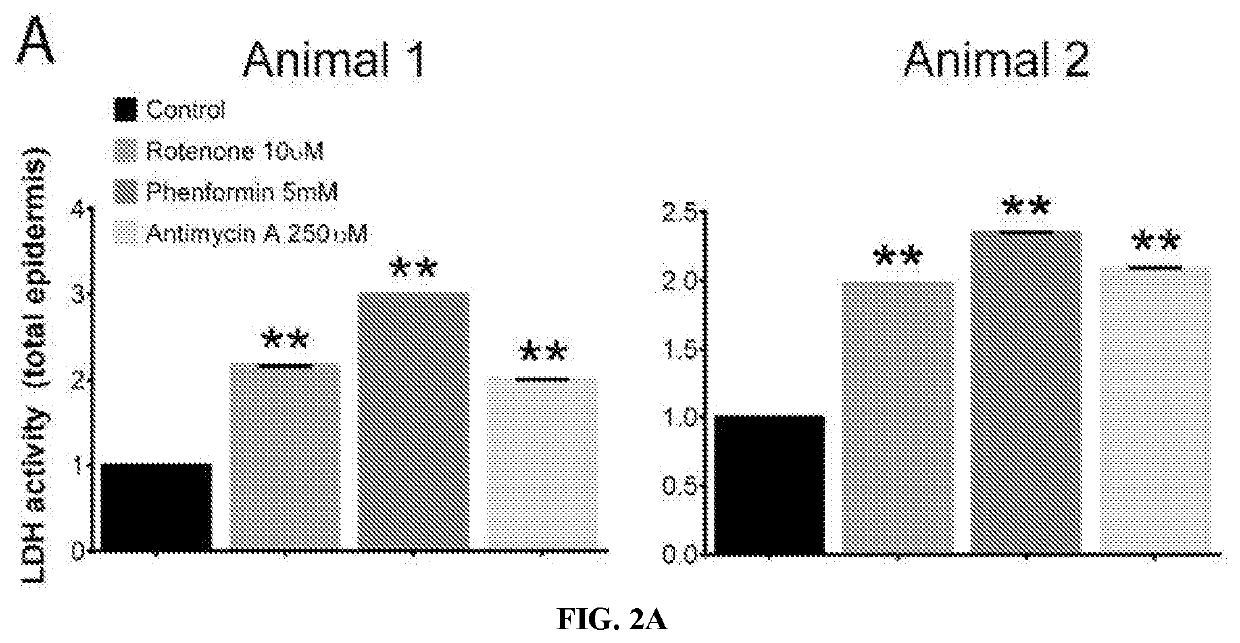Compositions and methods for modulating hair growth
a technology of compositions and methods, applied in the direction of organic active ingredients, dermatological disorders, drug compositions, etc., can solve the problems of inconvenient existing treatment for users, inability to successfully treat baldness and alopecia, etc., and achieve the effect of promoting hair growth
- Summary
- Abstract
- Description
- Claims
- Application Information
AI Technical Summary
Benefits of technology
Problems solved by technology
Method used
Image
Examples
example 1
ETC Activity on HFSC Activation
[0065]To determine whether manipulation of ETC activity could affect HFSC activation, various inhibitors of ETC components were topically applied to mice during a resting phase of the hair cycle. The topical formulation was prepared by suspending the active ingredient in PLO Ultramax Gel (lecithin organogel). At postnatal day 50, the hair follicle is in telogen, a resting phase where the stem cells of the follicle are quiescent until the start of the next hair cycle at day 70-80. Rotenone, Phenformin, and Antimycin A are established inhibitors of Complex I, and Complex III, respectively. Animals were shaved at postnatal day 47 and treated with the indicated compounds or vehicle on the shaved area every 48 hours for the indicated duration. After 3-4 treatments (8-12 days), animals treated with ETC inhibitors began to show signs of hair cycle activation macroscopically, judged by pigmentation of the skin in black mice whereas vehicle treated mice did not...
example 2
of ETC-Inhibited Tissues
[0066]To demonstrate that the pigmentation induced by ETC inhibition was in fact due to changes in hair follicle stem cell activation, tissue was harvested and subjected to pathology. Histological analysis showed that follicles in backskin treated with ETC inhibitors promoted a normal telogen-to-anagen transition (FIGS. 1B and 3B). These findings were also in stark contrast to previous studies showing that transgenic abrogation of the ETC led to hair follicle degeneration.
example 3
kness Measurements
[0067]To determine whether the hair cycle induction driven by ETC inhibition was typical, the thickness of each layer of skin was measured at different stages of treatment. As shown in FIG. 1C, all of the ETC inhibitors increased the thickness of the epidermis, dermis, and particularly the hypodermis, suggesting a strong expansion of the adipocytes. Analysis of ETC inhibited skin showed a strong increase in Ki67 in HFSCs a week after treatment, evidence of HFSC activation in response to ETC inhibition (FIGS. 1D and 3D). To determine whether application of the ETC inhibitors promoted inflammation, which could cloud interpretation of hair cycle data, various markers of chemokine response and the presence of inflammatory immune cells were assessed after treatment. There was no evidence of significant inflammation by these measures in response to ETC inhibition (FIG. 3D).
PUM
| Property | Measurement | Unit |
|---|---|---|
| Transport properties | aaaaa | aaaaa |
| Disorder | aaaaa | aaaaa |
Abstract
Description
Claims
Application Information
 Login to View More
Login to View More - R&D
- Intellectual Property
- Life Sciences
- Materials
- Tech Scout
- Unparalleled Data Quality
- Higher Quality Content
- 60% Fewer Hallucinations
Browse by: Latest US Patents, China's latest patents, Technical Efficacy Thesaurus, Application Domain, Technology Topic, Popular Technical Reports.
© 2025 PatSnap. All rights reserved.Legal|Privacy policy|Modern Slavery Act Transparency Statement|Sitemap|About US| Contact US: help@patsnap.com



